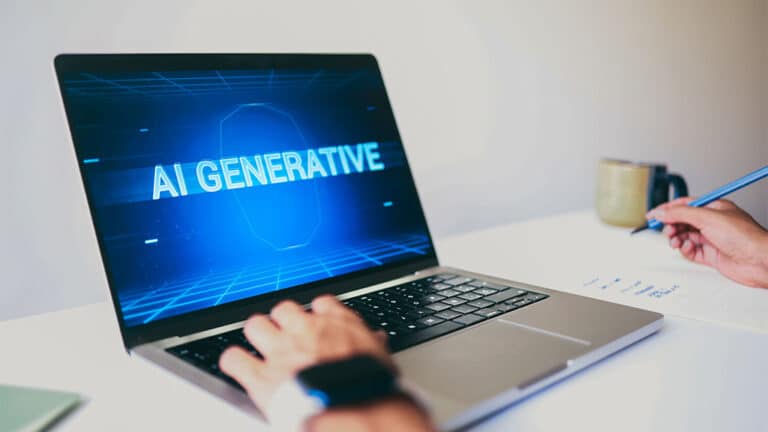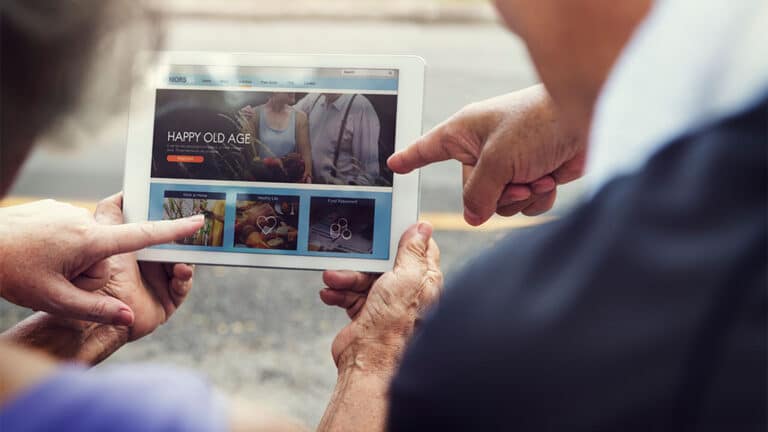Modern Website Design: Key Trends and Best Practices for 2025
Introduction: The Importance of Modern Website Design
In 2025, having a modern website design is more crucial than ever for any business aiming to stand out in the digital landscape. With increasing competition online and rapidly evolving technology, a well-designed website doesn’t just look appealing; it also enhances user experience, reflects brand credibility, and boosts conversion rates. Modern website design isn’t about flashy graphics or complicated layouts; it’s about creating a streamlined, engaging, and functional experience for every visitor.
Today’s consumers expect seamless navigation, responsive layouts, and fast load times across devices. A modern design caters to these expectations by prioritizing usability and accessibility, ensuring that visitors have a positive experience whether they’re browsing on a smartphone or a desktop. Moreover, as design trends continue to evolve, keeping up with modern design principles helps a business project an image of relevance and innovation. From minimalistic aesthetics to mobile-first approaches, modern website design focuses on clean, user-friendly layouts that align with both brand goals and user preferences.
Characteristics of Modern Website Design
Modern website design is marked by a few key characteristics that set it apart from traditional or outdated styles. These elements reflect current best practices and aim to create a visually pleasing, intuitive experience for users. Here’s what defines a modern website design:
- Minimalism: Modern websites embrace simplicity. By focusing on essential content and reducing unnecessary elements, minimalistic design helps visitors find information quickly without distraction. White space, clean lines, and uncluttered layouts make the design feel open and welcoming.
- Responsive and Mobile-Friendly Layouts: In today’s world, where mobile browsing has surpassed desktop usage, a modern website must be responsive. Modern design prioritizes mobile-first development, ensuring that the site adapts effortlessly to various screen sizes and provides an optimal experience across all devices.
- User-Centered Design: Modern website design focuses on the user’s journey, making navigation intuitive and ensuring that information is easy to find. Each design element, from buttons to images, is placed with the user in mind, enhancing functionality while creating a pleasant browsing experience.
- High-Quality Visuals and Content: Visuals play a critical role in modern design, but they are carefully curated to reflect brand values and engage the target audience. High-resolution images, videos, and infographics are integrated to add value and appeal, not just for visual interest.
These characteristics reflect the core of modern website design: simplicity, adaptability, and a strong focus on the user. By building a site that incorporates these elements, businesses can provide an experience that feels fresh, relevant, and functional in 2025.
The Role of Minimalism and Clean Aesthetics
Minimalism has become a staple of modern website design, and for good reason. Clean, minimalistic design helps users focus on what truly matters without being distracted by unnecessary visuals or complex layouts. In a world where users expect fast, straightforward access to information, minimalism plays a crucial role in enhancing usability and aesthetics.
- Improves User Experience: Minimalistic design reduces cognitive load, meaning users don’t have to process excessive information to understand the website’s purpose. By stripping away unnecessary elements, minimalism helps visitors find what they’re looking for faster, leading to higher engagement and improved satisfaction.
- Boosts Visual Appeal: Minimalism’s emphasis on clean lines, ample white space, and carefully selected visuals creates a polished look that appeals to modern audiences. When designed thoughtfully, minimalistic layouts can be just as visually striking as more elaborate designs, allowing key messages to stand out more effectively.
- Increases Page Load Speed: By limiting the number of design elements and focusing on essential content, minimalistic websites tend to load faster. With fewer images, animations, and heavy graphics, load times improve, enhancing the user experience and potentially improving search engine rankings.
- Highlights Key Content and CTAs: In minimalistic design, each element serves a purpose. This approach allows for strategically placed calls-to-action (CTAs) and important content to capture users’ attention, guiding them naturally through the site’s journey.
Minimalism isn’t just about having a simple design; it’s about creating an intuitive, functional experience that meets user needs. By adopting clean aesthetics, modern websites provide a streamlined, visually appealing experience that feels both timeless and fresh. For businesses looking to update their digital presence, incorporating minimalistic principles can lead to a website that not only looks great but performs exceptionally well.
Responsive and Mobile-First Design
In 2025, responsive and mobile-first design has become a non-negotiable aspect of modern website design. With mobile traffic surpassing desktop use, users now expect websites to look and function flawlessly on any device. Mobile-first design, where sites are optimized for mobile screens before scaling up to desktops, has become a best practice for delivering a seamless experience.
- Improves User Accessibility: A mobile-first approach ensures that users accessing your website from smartphones or tablets have an optimal experience. Elements like menus, images, and text automatically adjust to fit smaller screens, making the site easy to navigate without excessive zooming or scrolling.
- Enhances SEO: Search engines like Google prioritize mobile-friendly websites, meaning a responsive, mobile-optimized design can directly impact your rankings. Mobile-first design helps meet search engine guidelines for accessibility and functionality, improving visibility and driving organic traffic.
- Future-Proofs the Website: As mobile technology continues to evolve, mobile-first design ensures your site remains relevant and accessible. This design approach also makes it easier to adapt to future devices and screen sizes, saving on potential redesign costs down the line.
By focusing on responsive and mobile-first design, businesses can meet user expectations, improve SEO, and create an adaptable website that serves audiences wherever they are.
Embracing Dark Mode and High-Contrast Elements
Dark mode has become a popular option for modern websites, offering users a visually appealing alternative to the traditional light interface. Dark mode reduces screen glare, enhances readability, and can help conserve battery life on mobile devices. Integrating dark mode as an option is increasingly expected, giving users control over their viewing experience.
- Improves User Comfort: Dark mode can reduce eye strain, particularly for users browsing at night or in low-light environments. High-contrast text and elements stand out more on a dark background, making content easier to read.
- Adds a Modern Aesthetic: Many users appreciate the sleek, stylish look of dark mode. It allows brands to experiment with unique color schemes and vibrant visuals that pop against darker backgrounds, creating a more immersive experience.
- Enhances Accessibility: For some users with visual impairments, high-contrast elements and dark mode can improve readability and navigation. Providing the option for dark mode helps ensure your site is inclusive, accommodating the needs of a broader audience.
Offering a dark mode option in website design can elevate the user experience, cater to modern preferences, and enhance accessibility. It’s a valuable addition for brands aiming to create a cutting-edge digital experience that feels both functional and visually compelling.
Micro-Interactions and Animations for User Engagement
Micro-interactions and subtle animations are a hallmark of modern website design, enhancing the user experience without overwhelming the viewer. These small, interactive elements can range from buttons that change color when hovered over to icons that animate when clicked. Micro-interactions add a layer of feedback and engagement that keeps users connected to the website.
- Creates a Dynamic User Experience: Micro-interactions make browsing feel interactive and engaging. Small animations or hover effects can surprise and delight users, making their experience on your site more memorable and enjoyable.
- Guides User Behavior: Micro-interactions provide visual cues that guide users through the website. For example, a small animation on a call-to-action (CTA) button can draw attention, encouraging users to click. This subtle guidance can lead to increased engagement and conversions.
- Adds Personality to the Design: Incorporating animations and micro-interactions allows brands to infuse personality into their design. Playful icons, animated graphics, or engaging feedback loops help convey a brand’s tone and make the website feel unique.
- Provides Feedback and Confirmation: Micro-interactions can also reassure users by providing immediate feedback. For instance, when a user clicks a button and it briefly changes color, it confirms that their action was registered, which can enhance the overall usability of the site.
By using micro-interactions and animations sparingly, modern websites can create an engaging, interactive experience that elevates user engagement without distracting from the main content. These small details contribute to a more dynamic site that feels responsive, alive, and tailored to the user’s actions.
Bold Typography and Unique Fonts
Typography has become a powerful design element in modern website design, used to convey brand personality, grab attention, and improve readability. Bold, unique fonts are now common in headers, landing pages, and CTAs, helping brands communicate their message in a visually compelling way.
- Grabs Attention: Large, bold fonts draw users’ eyes to key messages, such as the company’s tagline or primary service offerings. Typography can help guide users through the content hierarchy, ensuring that essential information stands out.
- Conveys Brand Personality: The style of font chosen—whether modern and minimalist, vintage, or playful—can evoke the brand’s character and values. Custom or unique fonts give websites a distinct look, setting them apart from competitors.
- Improves Readability: With increased screen variety, it’s essential to choose fonts that are both visually appealing and easy to read on any device. Modern websites often use high-contrast typography to enhance legibility, especially when paired with dark mode or minimalist layouts.
By integrating bold typography and unique fonts, brands can create a memorable visual identity, improving user engagement and enhancing brand recall. However, it’s important to maintain readability, balancing aesthetic appeal with user accessibility.
The Importance of Fast Loading Speeds and Performance Optimization
In the fast-paced digital world, speed is crucial. Modern users expect websites to load almost instantly, and delays can lead to high bounce rates and reduced engagement. Optimizing for speed is now an integral part of modern website design, as both user satisfaction and search engine rankings are affected by loading times.
- Enhances User Experience: Slow-loading sites frustrate users and often lead to abandonment. By optimizing image sizes, reducing code bloat, and enabling caching, websites can load more quickly, providing a smoother experience.
- Boosts SEO Performance: Search engines like Google prioritize fast-loading sites, making speed optimization a factor in SEO ranking. Faster websites are more likely to appear at the top of search results, attracting more organic traffic.
- Increases Conversion Rates: Studies show that even a one-second delay can significantly impact conversions. By focusing on fast load times, businesses can reduce the likelihood of users leaving and increase the chances of completing desired actions, like signing up or making a purchase.
By optimizing loading speed and overall performance, businesses can create a more efficient, user-friendly website that supports better engagement and SEO, directly impacting the bottom line.
Sustainable and Ethical Design Choices
Sustainability is becoming an important consideration in website design as more businesses look for ways to reduce their digital carbon footprint. Modern websites are increasingly built with eco-friendly practices in mind, from hosting solutions to energy-efficient design choices that minimize resource use.
- Eco-Friendly Hosting: Sustainable hosting providers prioritize renewable energy sources and eco-friendly practices to power their servers. Choosing a green hosting provider reduces the environmental impact of running a website.
- Optimized Code and Media: By using efficient coding practices and compressing images and videos, websites consume less bandwidth, leading to lower energy consumption. Techniques like lazy loading, which loads images only as they come into view, can also reduce energy use.
- Reducing Data and Bandwidth Use: Designers can optimize websites by limiting heavy files, such as large images or videos, and avoiding unnecessary animations or graphics. A streamlined site uses less data and bandwidth, supporting sustainable practices.
- Accessibility and Inclusivity: Ethical design goes beyond sustainability, encompassing accessibility to ensure that all users, including those with disabilities, can access the site’s content. Accessible design elements like readable fonts, alt text for images, and clear navigation structures create an inclusive experience.
Adopting sustainable and ethical design practices reflects positively on a brand, appealing to environmentally-conscious consumers and promoting a more inclusive digital environment.
Conclusion: Building a Modern Website That Reflects Your Brand
Modern website design is more than a trend; it’s an essential part of creating a positive, memorable online experience for users in 2025 and beyond. By embracing elements like responsive design, minimalistic layouts, bold typography, and sustainable practices, businesses can create websites that not only attract visitors but also engage and convert them.
Incorporating these trends requires a balance between aesthetics, functionality, and usability. A modern website should not only look appealing but also serve the user’s needs, load quickly, and adapt seamlessly across devices. By focusing on the latest best practices, businesses can ensure their websites remain relevant, accessible, and effective in driving growth.For businesses aiming to stay ahead in the digital space, partnering with a professional design agency can make all the difference. Zen Agency’s website design services combine the latest design trends with expert customization to create sites that align with your brand and connect with your audience. Ready to build a modern, impactful website that stands out in 2025? Contact Zen Agency today to bring your vision to life with a website that truly reflects your brand and supports your business goals.

















